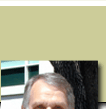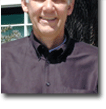| |
Samuel
N. Luoma
Emeritus
B.S., Montana State
University, Zoology
M.S., Montana State University, Zoology, "Hibernation
in the Western Jumping Mouse, Zapus princeps".
Ph.D., University of Hawaii, Marine Biology, "Mercury
cycling in a small Hawaiian estuary"
snluoma@usgs.gov
650-329-4481
Dr. Samuel N. Luoma has moved to emeritus
status at USGS, after 34 years as a project chief with the
agency and 15 years as a Senior Research Hydrologist. He remains
active in project research, however. At present he also leads
science policy coordination for the John Muir Institute of
the Environment at the University of California, Davis. He
is the Editor-in-Chief of San Francisco Estuary & Watershed
Science and is a Scientific Associate with The Natural History
Museum in London, UK. He served as the first Lead Scientist
for the CALFED Bay-Delta program, an innovative program of
environmental restoration of over 40% of California's watershed,
and water management issues for 60% of California's water
supply.
Research Interests
Luoma’s specific research interests are in the bioavailability
and ecological effects of metals in aquatic environments.
He is an author on more than 200 peer-reviewed publications.
Developing interests include work with metallo-nanoparticles.
In 2008 he worked with the Woodrow Wilson International Center
for Scholars to write a report on the state of knowledge with
regard to nanosilver: Silver Nanotechnologies and the Environment:
Old problems or new challenges. He wrote Introduction to Environmental
Issues, in 1984, published by Macmillan Press and, with co-author
Philip Rainbow recently finished Metal Contamination in Aquatic
Environments: science and lateral management, which will be
released by Cambridge University Press in Sept. 30 2008. He
is an editorial advisor for the highly respected Marine Ecology
Progress Series, and is on the editorial board of Oceanologia.
He was a W.J. Fulbright Distinguished Scholar in the UK in
2004 and is a Fellow in the American Association for the Advancement
of Science. His awards include the President’s Rank
Award for careers accomplishments as a senior civil servant,
the U. S. Department of Interior's Distinguished Service Award
and the University of California at Davis Wendell Kilgore
award for environmental toxicology. He has served nationally
and internationally as a scientific expert or advisor on issues
at the interface of science and environmental management,
including sediment quality criteria (USEPA SAB Sub-committee),
Bioavailability of Contaminants in Soils and Sediments (Canadian
National Research Council, 1987; US National Research Council
sub-committee, 2000-2), mining issues (UNESCO, Global Mining
Initiative), selenium issues, environmental monitoring, and
metal effects.
Selected publications
Luoma, S. N. 1978. Detection of
trace contaminant effects in aquatic ecosystems. J. Fish.
Res. Bd. Can., 34:436-439.
Luoma S. N. and Bryan, G. W., 1978. Factors
controlling availability of sediment-bound lead to the estuarine
bivalve Scorbicularia plana. J. Mar. Biol. Assoc., UK, 58:793-802.
Luoma S. N., 1983. Bioavailability of
trace metals to aquatic organisms--A Review. Sci. Total Environ.,
28:1-22.
Nichols, F. H., Cloern, J. E., Luoma,
S. N. and Peterson, D. H., 1986. The modification of an estuary.
Science,
231:567-573.
Luoma, S. N., 1989. Can we determine
the biological availability of sediment-bound trace elements?
Hydrobiologia, v. 176/177: 379-396.
Moore, J. N., and Luoma, S. N., 1990.
Hazardous wastes from large scale metal extraction: A case
study. Environ.
Sci. Technol., 24:1279-1285.
Luoma, S. N., Johns, C., Fisher, N. S.,
Steinberg, N. A., Oremland, R. S., and Reinfelder, J. 1992.
Determination of selenium bioavailability to a benthic bivalve
from particulate and solute pathways. Environ.
Sci. Technol., 26:485-491.
Luoma, S. N. 1995. Prediction of Metal
Toxicity in Nature from Bioassays: Limitations and Research
Needs in Metal Speciation and Bioavailability in Aquatic Systems,
A. Tessier and D. Turner, eds. p. 609-646, John Wiley and
Sons, Ltd., London.
Luoma, S. N. 1996. The developing framework
of marine ecotoxicology: Pollutants as a variable in marine
ecosystems? J.
Exptl. Mar. Biol. Ecol., 200: 29-55.
Luoma, S. N., and Fisher, N., 1997. Uncertainties
in assessing contaminant exposure from sediments: Bioavailability.
p. 211-239. In Ecological Risk Assessments of Contaminated
Sediments, C. Ingersoll, T. Dillon, G. Biddinger, eds. SETAC
Press, Pensacola, FL.
Luoma, S.N., van Geen, A., Lee, B-G.,
and Cloern, J.E. 1998. Metal uptake by phytoplankton during
a bloom in south San Francisco Bay: Implications for metal
cycling in estuaries. Limnology
& Oceanography, 43:1007-1016.
van Geen, A., and Luoma S. N. (eds) 1999.
The impact of human activities on sediments of San Francisco
Bay. Mar.
Chem. 64:1-127.
Lee, B.-G., Griscom, S. B., Lee, J-S.,
Choi, H. J., Koh, C-H., Luoma, S. N., and Fisher, N. S. 2000.
Influence of dietary uptake and reactive sulfides on metal
bioavailability from aquatic sediments. Science,
287: 282-284.
Luoma, S.N., W Clements, T DeWitt, J
Gerritsen, A Hatch, P Jepson, T Reynoldson, and R Thom. 2001.
Role of Environmental Variability in Evaluating Stressor Effects.
p. 141-176 In DJ Baird & GA Burton, eds. Ecological Variability:
Separating Natural from Anthropogenic Causes of Ecosystem
Impairment. SETAC Press, Pensacola, FL.
Luoma SN, Brown SS, Foster WG, Leckie
JO, Teisl MF, Thomas JK, and Williams-Fleetwood, SO. 2002.
Chapter4: Characteristics and Implications. P. 67 - 103 In
RT DiGiulio and WH Benson, eds. Interconnections between Human
Health and Ecological Integrity. SETAC Press, Pensacola, FL.
|


